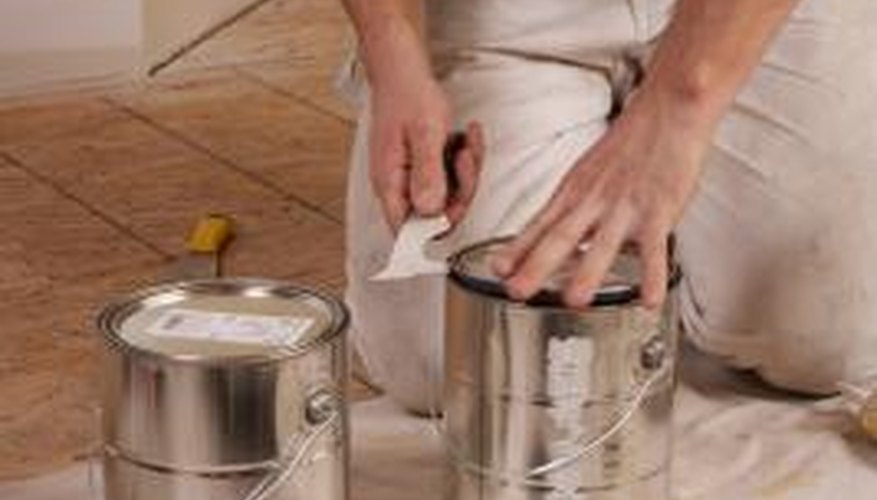Oil-based paint, also referred to as "alkyd paint," requires solvents to keep its solids suspended; these solvents are called Volatile Organic Compounds (VOC). When exposed to air, VOCs evaporate and when inhaled, can cause health problems that range from headaches and dizziness to cancer. The dangers vary, largely based on the health of the individual exposed to the fumes; however, babies, children and expectant women are particular susceptible to these toxins and should be kept away from rooms in which oil-based paints are required.
Facts About Oil-Based Paint
Oil-based paints are generally used outdoors and in rooms like bathrooms and kitchens that require a moisture-resistant finish. In addition to solvents, oil-based paint that is designated as an outdoor paint will often include mercury, which is toxic to humans.
- Oil-based paints are generally used outdoors and in rooms like bathrooms and kitchens that require a moisture-resistant finish.
- In addition to solvents, oil-based paint that is designated as an outdoor paint will often include mercury, which is toxic to humans.
Lead was included in oil-based paint until 1978, when the government restricted the amount allowed to .06 per cent or less. Although many manufacturers have voluntarily discontinued using lead in their residential oil-based paints, it is still used in industrial paint.
Health Hazards
Studies have shown that pregnant women who are exposed to VOCs, including glycol ether, have an increased chance for miscarriage. Other VOCs increase the risk of miscarriage and birth defects.
VOCs are particularly dangerous for babies because they hinder their development. Short-term exposure may cause headaches, dizziness, fatigue, respiratory problems and nausea. Long-term exposure may cause nervous system damage, which affects muscle coordination, growth and mental development.
- Studies have shown that pregnant women who are exposed to VOCs, including glycol ether, have an increased chance for miscarriage.
- Long-term exposure may cause nervous system damage, which affects muscle coordination, growth and mental development.
Safety
When using oil-based paint indoors, paint during times of low humidity and cross-ventilate to ensure that the paints dry quickly. It is also a good idea to wear a respirator, especially if pregnant, and close paint cans tightly when they're not in use. Babies and children should not be allowed in the vicinity where alkyd or oil-based paints are used until the paint has thoroughly dried. This typically takes two to three days.
- When using oil-based paint indoors, paint during times of low humidity and cross-ventilate to ensure that the paints dry quickly.
Key Words Used on Labels with Oil-Based Paint
Paints that include VOCs will sometimes be labelled as an "alkyd" or as "solvent based." A label of "outdoor use only" is also an indication of an oil-based paint.
Ingredients that include epoxy, urethane or varnish, and instructions for cleaning that specify paint thinner are also indications that the paint is oil-based and should not be applied in the presence of a baby.
